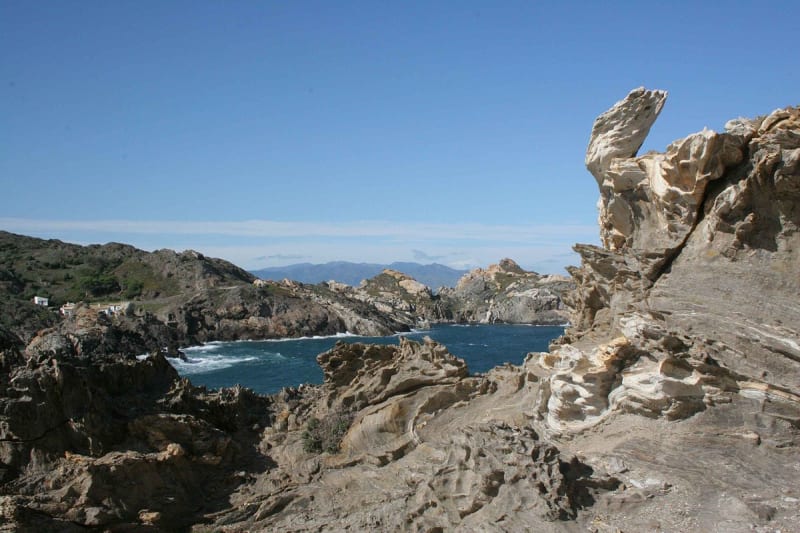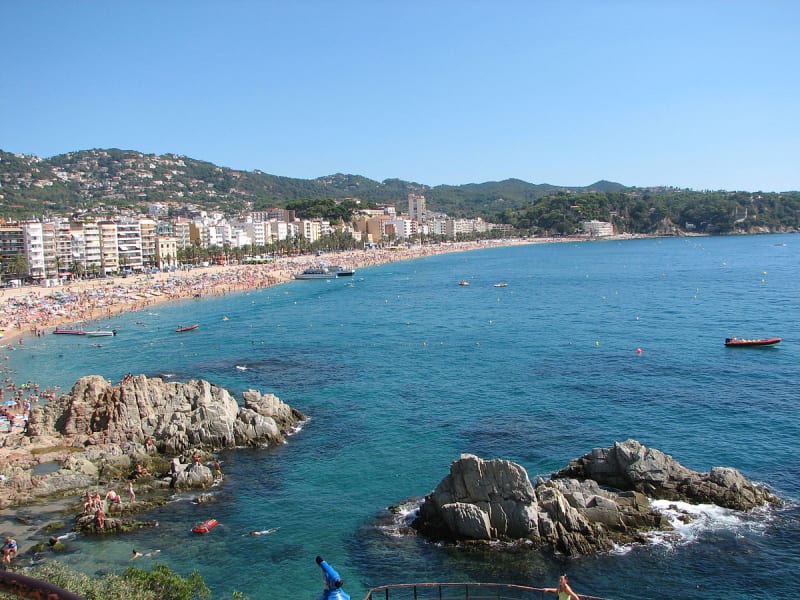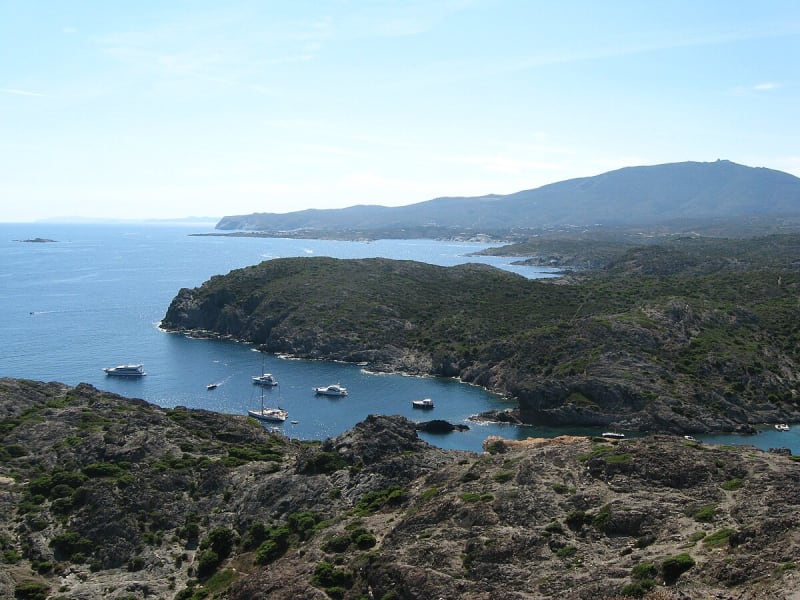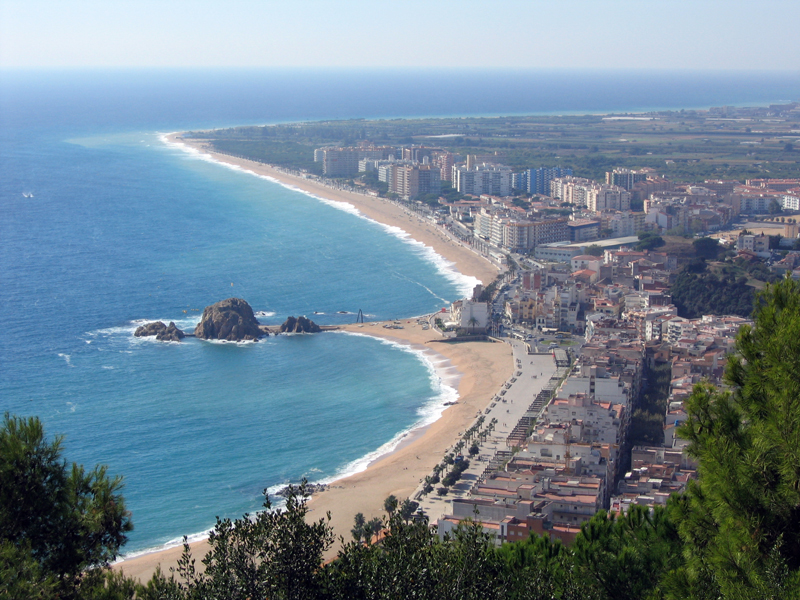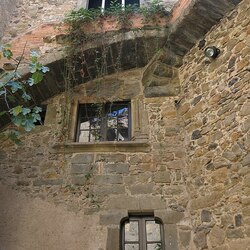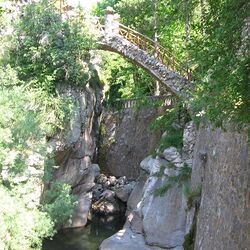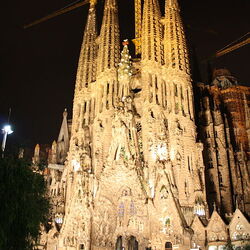Costa Brava
The Costa Brava is 160 km long, starting from the Spanish city of Blanes and reaching the borders of neighboring France. A picturesque part of the Mediterranean coast, harmoniously combining white gentle sandy beaches and harsh cliffs covered with green pines and fir trees. It translates as "wild, rocky shore". Gray stone cliffs protruding into the azure sea are replaced by coves and bays with sandy and pebble beaches, creating a unique landscape.
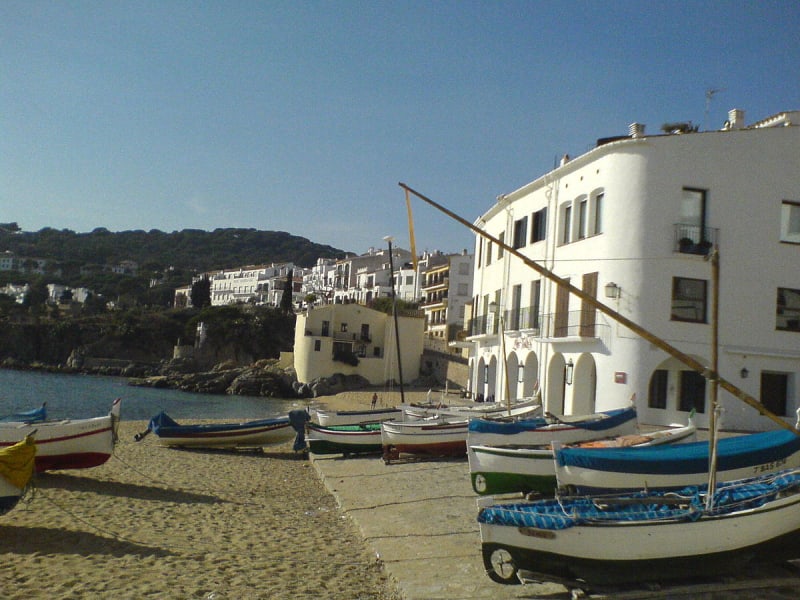
Description
The mild, warm climate and magnificent nature of the Costa Brava have attracted people here since ancient times. It is no coincidence that traces of the first settlements dating back to 200 BC have been found on the coast. The Pyrenean mountain ranges, covered with bright emerald green forests surrounding the coast, hide the secrets of dilapidated medieval castles and famous dolmens.
At the top of Werder Mountain are the ruins of Werder Castle, and on one of the slopes stands a former Benedictine monastery. The Costa Brava is closely associated with the great Salvador Dali. There is a theater museum named after him in Figueres, and his house museum is located in Cadaques. In the city of Pubol stands the Gala Dali Castle, which was once presented by a talented artist as a gift to his beloved.
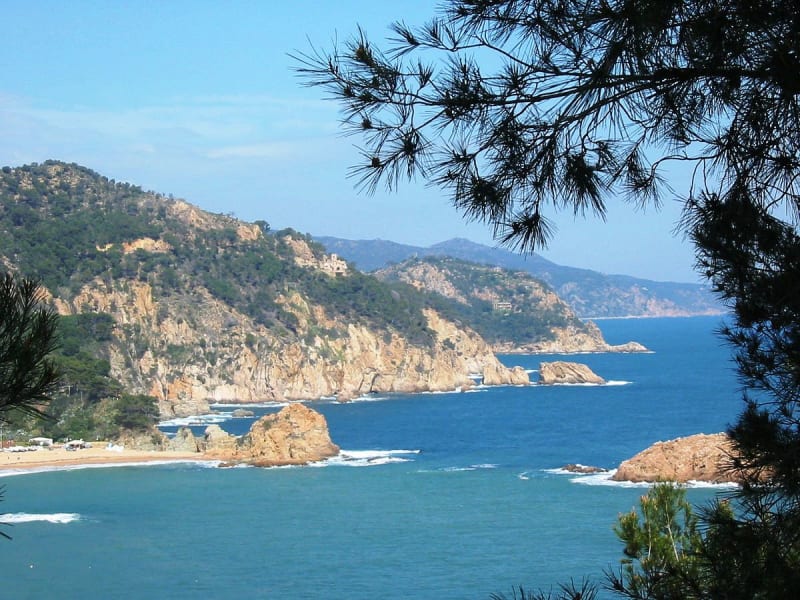
Lloret de Mar
It is the largest and busiest resort on the Costa Brava. Lloret de Mar translates as "the city of laurel trees." Here stands the ruined castle of Sant Joan, which was an impregnable fortress in the 11th century.
The castle of d, en Plaza, is located on a hill. Tourists are not allowed access there, but that doesn't stop them. There is a walking path along the cliffs near the castle, which offers magnificent views of the sea and the coast.
The interest of Costa Brava tourists is enjoyed by the Church of San Roma, built in the Gothic style in 1522. The bell tower of the church is surrounded by a thick wall with loopholes. At that time, the coast was often attacked by pirates. The locals hid from them in hidden corners. One of them was the church bell tower. In addition, the road to the temple went over a drawbridge spanning a deep moat. This is not just a church, but also a reliable fortress.
The best attraction of the Costa Brava is the Renaissance-style Gardens of St. Clotilde Park. On the territory of the park, located in an elite area, you can admire magnificent fountains, grottos, view beautiful sculptures, and relax by the picturesque ponds. The luxurious park impresses visitors with its splendor, but it looks elegant and sophisticated at the same time. The park appeared in 1919.
The modernist cemetery invariably attracts increased tourist interest. It appeared at the end of the 19th century . He is considered the legacy of the Indianos. That was the name given to well-to-do people who returned from their jobs in the West Indies. Demonstrating the status of the rich, they brought a new style not only to their luxurious homes, but even to the cemetery. Majestic mausoleums, tombstones with sculptures are of historical and architectural interest. Famous sculptors and architects of that time worked on them.
The coast near the always bustling Lloret de Mar is the most popular place to hang out. There are bars and cafes open around the clock, the menu of which necessarily offers fish and seafood dishes. Discos are held until dawn, and in some establishments they take place during the day.
Tossa de Mar
A comfortable seaside resort, more suitable for family holidays. The city is located near a picturesque bay surrounded by a golden sandy beach. Not far from it stands an ancient castle with battlements and watchtowers. The beach is surrounded by high cliffs, covered with the bright greenery of a pine forest. Tossa de Mar is called the pearl of the Costa Brava.
The medieval fortress of Vila Velha (meaning "old town"), built in the 12th century. to protect against pirates, it is located on the peninsula. The form that the fortress has now, it acquired in the XIV century. The nearly 60-meter high walls with battlements and narrow loopholes have 4 watchtowers and 3 towers in the shape of a cylinder with parapets. At the highest point of the fortress, at an altitude of 70 m, there is currently a lighthouse. The fortress, of course, suffered some damage during its existence, but it still looks monumental today.
The former governor's house houses a museum where, along with archaeological exhibits, you can see the works of Marc Chagall, who often visited the town. Chagall called it the "blue paradise."
Blanes
Blanes is the oldest city on the Costa Brava. The first mention of it dates back to 1002. In the 16th century, a monastery of Capuchin monks was opened in the city. San Juan Castle, built in the 13th century, stands above Blanes on the mountain. Nearby are the ruins of the castle of the Viscounts Cabrera, built in the XII century.
The Gothic fountain, built in the 15th century, and, of course, the botanical gardens "Pinia de Rosa" and "Mar and Murtra" are popular with tourists.
Every year in July, the city celebrates the feast of St. Nicholas. St. Anne and St. Joachim, lasting 4 days. More than 500,000 tourists from all over the world are eager to get here at this time to see the largest fireworks festival in Europe. Usually, a grandiose show is watched from the beach. More than 500 tons of fireworks are burned during the fiesta.
The Costa Brava is popular for its water parks and amusement parks. For example, not far from Blanes is the Marineland water park, where, in addition to traditional water activities, there is a zoo and a dolphinarium. A little to the north is the Gnome Park, famous for its rope towns. The huge Water World water park, which is located near Lloret de Mar, is impressive.
Outdoor enthusiasts will find interesting activities on the shore. Kayaking, surfing, diving, flyboarding, yachts – entertainment for every taste. How many exciting experiences excursions to caves and sunken ships bring!
There is a great opportunity for both beginners and experienced athletes to go aerial surfing on the coast. The Costa Brava is rightfully considered an international center of tourism.
